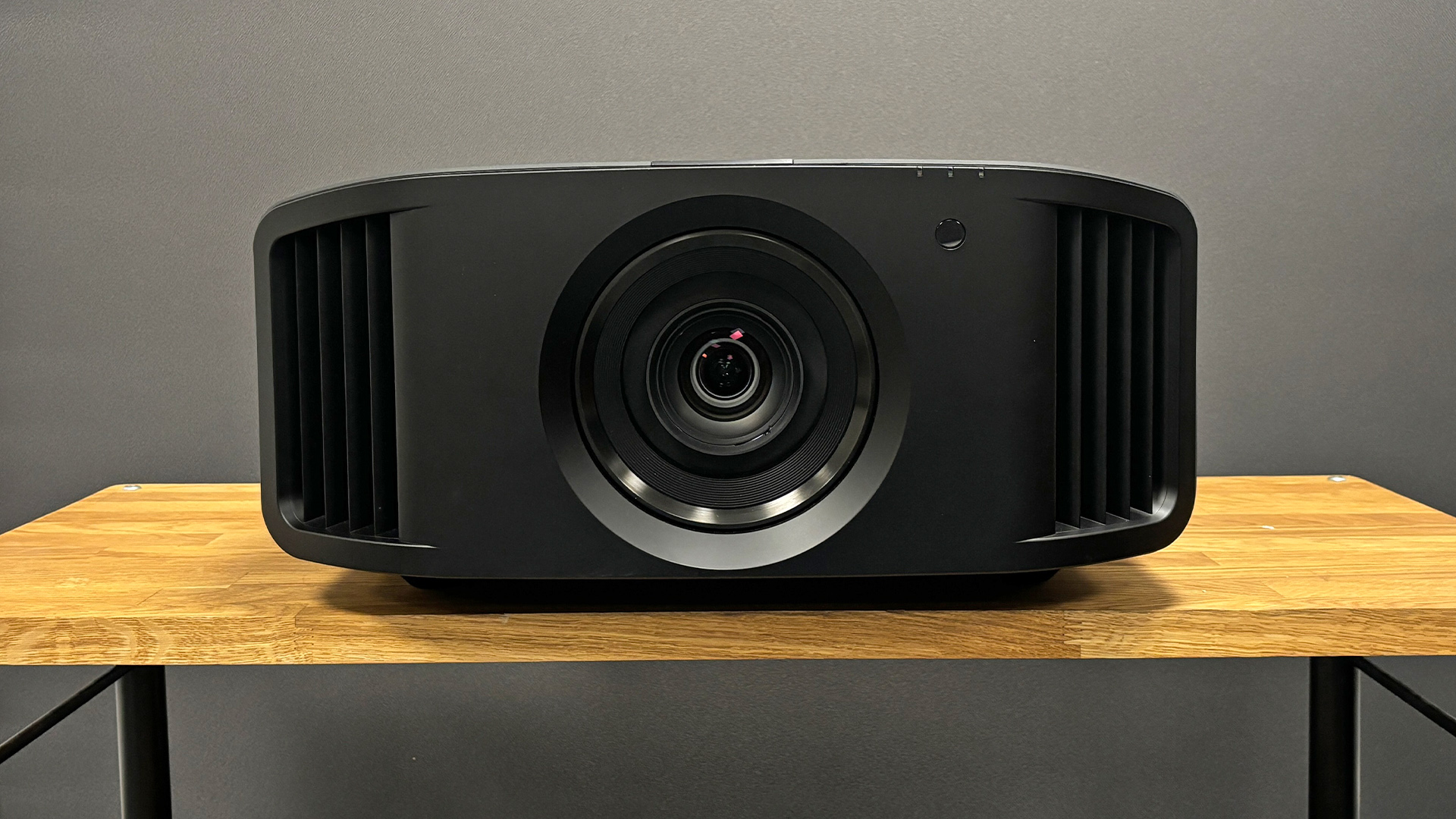
JVC’s D-ILA projector line has been one of our go-to recommendations for high-end home cinema enthusiasts. The range has consistently delivered rich, authentic visuals for quite some time now, and the brand hopes to continue that tradition with its latest pair of premium projectors.
We’re looking at the DLA-NZ800 model here, a step down from the flagship DLA-NZ900 that has launched alongside it. These models are replacing the existing DLA-NZ8 and DLA-NZ9 respectively. Both are well-regarded projectors themselves, and the latter received a five-star rating from us back in 2022.
So, can the DLA-NZ800 live up to our very lofty expectations? It goes further than that: it smashes them.
Price
At £15,999 / $16,000 / AU$24,999, the DLA-NZ800 will only appeal to the most dedicated of home cinema enthusiasts. While there are much more affordable options on the market from the likes of Epson and BenQ, JVC is making no apologies for the premium price point of this high-end projector.
To contextualise it within the current lineup of D-ILA projectors, this sits in between the new DLA-NZ900 (£26,000 / $25,999 / AU$40,999) and the existing DLA-NZ7 (£11,499 / $10.999 / AU$16,000).
Looking at a wider range of enthusiast home cinema projectors, the DLA-NZ800 is in the direct firing line of the Sony VPL-XW7000ES – if we’re specifically talking about UK and Australian pricing, that is. Despite launching at £14,999 / $27,999 / AU$25,499, the Sony can be found for around £13,000 these days thanks to gradual price decreases. Unfortunately, the price has remained firmly much higher in the US.
Build
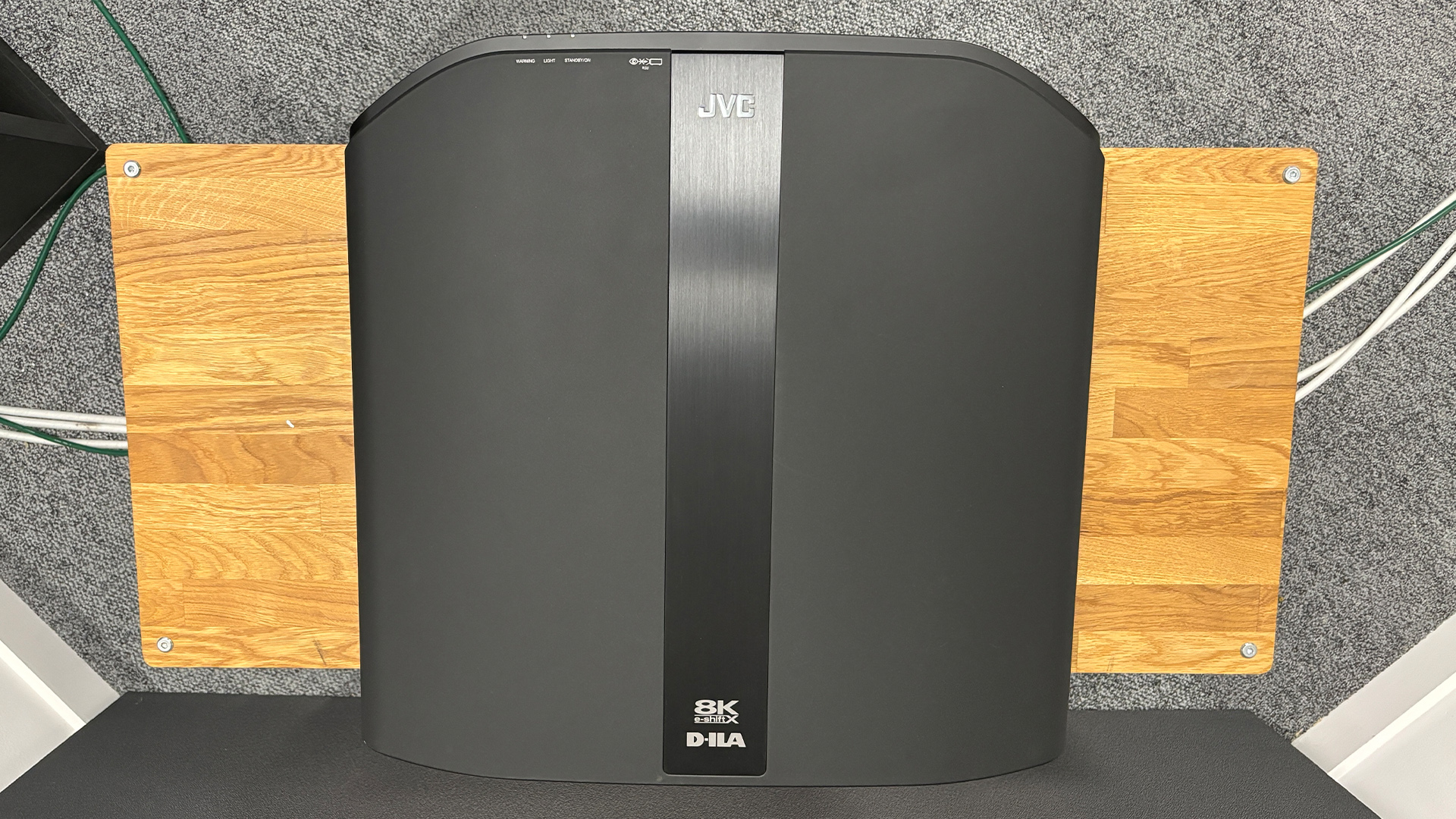
If this was a beauty contest, the JVC DLA-NZ800 wouldn’t win any awards, but its smooth and sturdy construction is still very much appreciated. To be fair to JVC, it's rare to see a projector that scores many points in the looks department, and considering it will likely be above or behind you in a dark room, we can forgive the slightly bulky design. Weighing 23kg and measuring 23 x 50 x 51cm (the same as its predecessor) this unit is broad and heavy, meaning you’ll need a sturdy support to mount it to.
The entire unit is constructed of a smooth and solid-feeling matte black plastic, with a strip running along the top edge of the unit with D-ILA and 8K e-shiftX branding. It’s fairly understated, and while our unit came with a mark on the top panel out of the box, we find that it wipes away easily.
Along the front edge of the device, you’ll find a large, centrally-mounted lens. It’s a 65mm all-glass module with motorised shift, zoom and focus functions. The lens is a key point of difference between the NZ800 and NZ900, as the latter features a larger, 100mm example. Flanking the lens are two large cooling vents, which help the JVC run at an unobtrusive 24db of claimed fan noise – a figure we find to be pretty spot on during our testing.
JVC has bundled a familiar remote control with its new projector. This is the same one that we’ve seen with previous JVC D-ILA models, complete with a button selection that treads the careful line of being thoroughly useful without being overcomplicated. The featured buttons include shortcuts to picture settings, 8K e-shift options, your input source and more. There’s even a button to activate the backlight, which is a greatly appreciated feature considering the fact that we’re spending an extensive amount of time operating this projector in a dark home cinema room.
Features
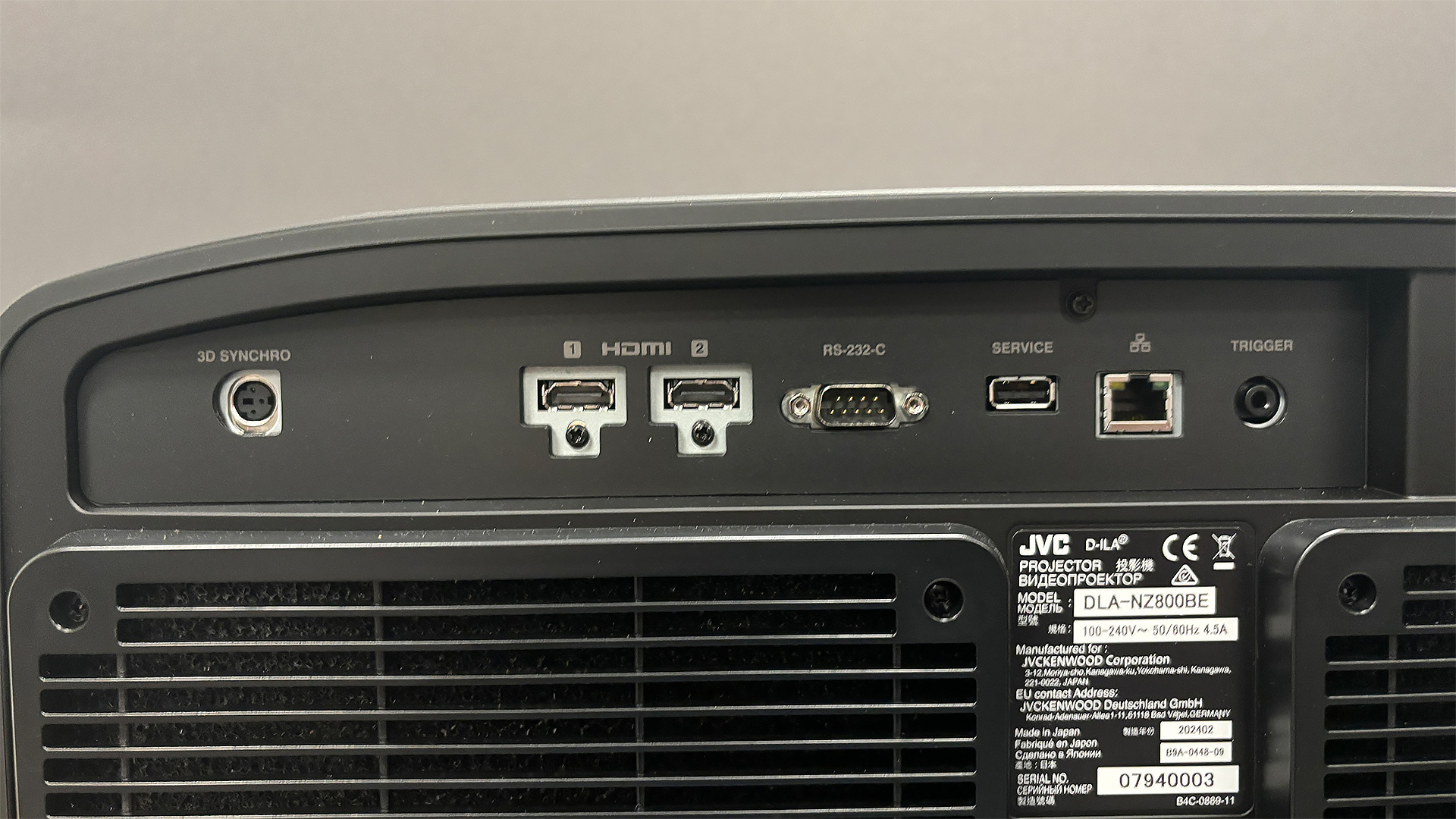
Starting with setup, we find the process of getting the DLA-NZ800 up and running to be simple, speedy and intuitive. The motorised lens components do a lot of the heavy lifting here, as we can make fine adjustments to the size and location of the picture to perfectly fit our screen. The only tricky element is propping the heavy projector up and adjusting the height of the feet underneath, which can be necessary to get the projected image to perfectly fit your screen.

Projector type Laser LCoS
Processing Clear Motion Drive, Black Depth Enhancer, 8K e-shiftX
Screen size Up to 200in (claimed)
Native resolution 3840x2160
HDR support HDR10+, HDR10, HLG
Dimensions 23 x 50 x 51cm (hwd)
This is a D-ILA projector, which means it uses JVC’s Liquid Crystal on Silicon (LCoS) projection technology. This approach is famed for combining the best aspects of DLP and LCD projection technology, typically offering deep and detailed blacks and crisp, well-defined details. JVC is touting a new third-generation 4K D-ILA chipset, which includes a flatter liquid crystal arrangement. The company says this will deliver greater screen uniformity and enhanced contrast. JVC isn’t the only manufacturer to use LCoS projection technology, as Sony also utilises it in the VPL-XW7000ES and XW5000ES under its SXRD branding.
The DLA-NZ800 also features JVC’s Blu-Escent laser diode system, which delivers a claimed 2700 lumens of brightness. This is reportedly 10 per cent brighter than the previous model, according to JVC, while the 100,000:1 claimed contrast ratio is apparently seven times better than that of the DLA-NZ8. JVC has also included the latest generation of its e-shift pixel-shifting technology, which utilises the 4K chipset to produce an 8K image. Whereas previous generations have only leveraged one set of additional diagonal pixels, this latest version outputs four times the number of pixels to produce the 8K resolution.
In terms of HDR support, the JVC supports HDR10, HDR10+ and HLG, as is the case with the other models in the range. Here is where JVC trumps Sony, as the latter doesn’t support the dynamic HDR10+ format on its high-end projectors. The JVC also includes support for Fimmaker Mode, which is with most projectors and TVs a great shortcut to getting a pretty accurate image that is designed to reflect the director's original intent.
The DLA-NZ800 has just two HDMI sockets, but this is practically an industry standard so we’re not overly disappointed. They are rated to support 48GB bandwidth signals, which our Xbox Series S picks up on after we turn off the e-shift picture setting. Once that has been disabled, the NZ800 allows for 4K/120Hz gaming. You’ll also find outputs for trigger and 3D sync, as well as a USB socket on the rear of the projector, although that is strictly used for firmware updating purposes rather than media playback.
Picture
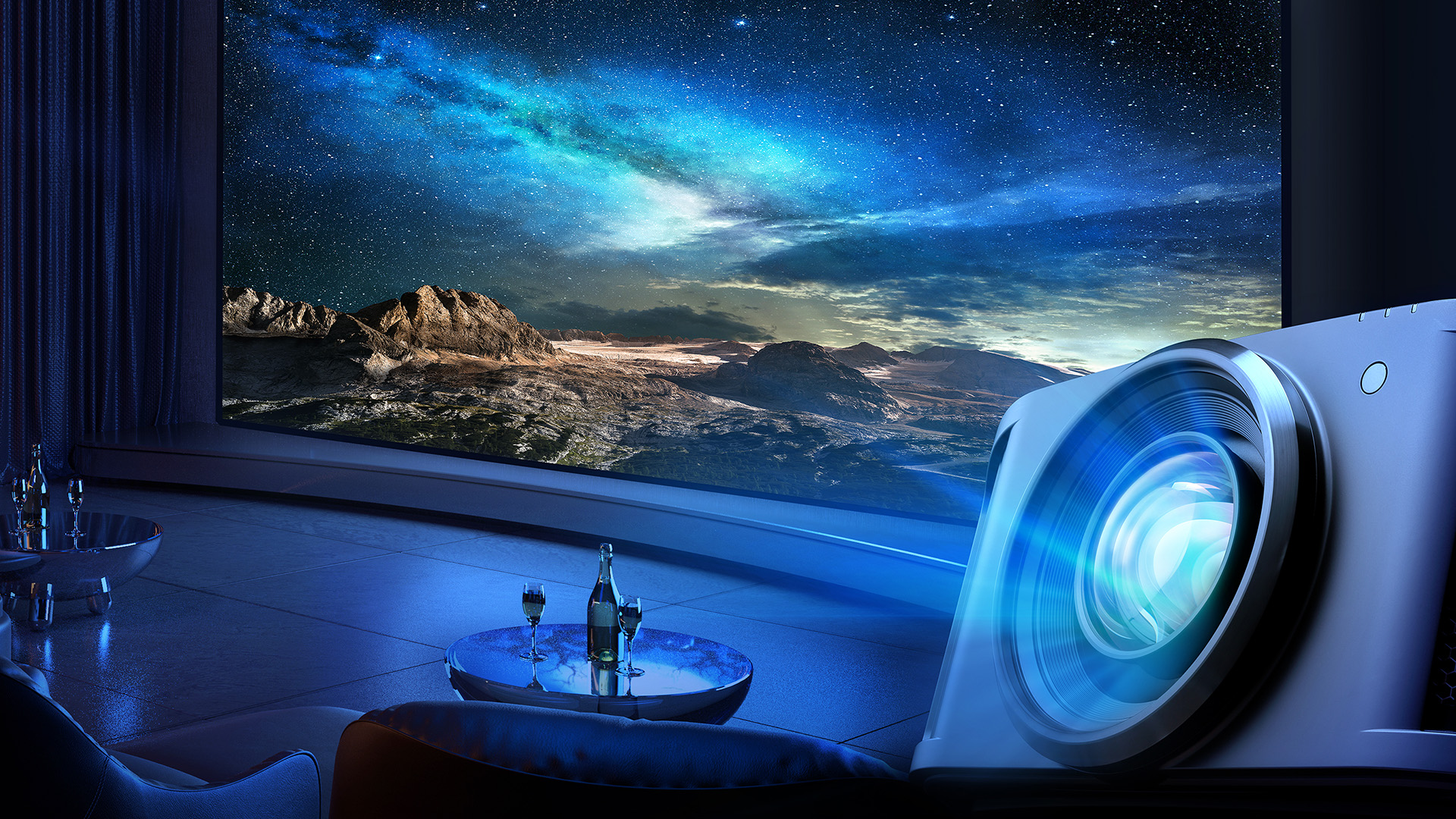
Considering JVC’s existing pedigree with professional home cinema projectors, it should come as no surprise that the NZ800 delivers a stunning image. We’ve paired it with our trusty Panasonic DP-UB820EB 4K Blu-ray player and a selection of 4K Blu-rays including Dune: Part Two, Oppenheimer, Barbie, Drive and The Dark Knight Rises. We also switch between various picture settings, including the Auto mode, which adapts to the material shown, as well as HDR10+ and the Filmmaker Mode preset. We also take the 8K e-shift setting for a spin – and, truthfully, we might have to concede that 8K has won us over.
The most striking aspect of this projector’s picture performance is how natural it looks. Watching Oppenheimer and the opening sequence of The Dark Knight Rises, we find the picture to be expertly balanced while still oozing rich and engaging detail. Colours are expertly judged, with a warmth to skin tones that strike a balance between looking lively without veering into overly rich and unnatural.
That being said, the JVC isn’t afraid to tackle brighter and bolder flicks such as Barbie with the necessary oomph. The signature hot pink shade pops with vibrancy, while the skin tones of all the Barbies and Kens remain balanced and realistic. We briefly switch to the SDR vibrant setting, which exaggerates the bold tones in a punchy and eye-popping display, but it also makes skin tones look a tad pasty in the process.
Contrast is also a key strength of the DLA-NZ800, as the solidity and three-dimensionality of the image are a sight to behold. It’s not as overt as the Sony VPL-XW7000ES, which retains the title of contrast king, but the JVC’s subtlety is to be savoured nonetheless. A simple panning shot of a watchtower in Oppenheimer feels beautifully realised with tangible depth and solidity.
Black levels are also stellar by projector standards, and the black depth enhancer feature helps to dig out additional details in the darkest part of the picture without raising the overall black floor – avoiding the greyish illuminated blacks we see on less accomplished projectors. The opening sequence of Drive demonstrates this, as the seedy streets of Los Angeles are bathed in convincing dark and deep shadows. A shot of the titular Driver half covered in shadows looks striking, with his eye still visible even in the darkest part of the shot.
What’s most impressive about the DLA-NZ800 is how adept it is at picking out intricate details. The 8K e-shift mode is truly impressive in how it sharpens the outlines of subjects on screen and how it digs up finer textural details on clothing, skin and within the environment. Switching it off, we find that edges look a bit softer, and some details in clothing aren’t quite as sharp, though we adjust quickly and find that the native 4K performance of this projector is still very impressive overall. This is likely the preferred option for purists, although it has to be said that we don’t notice any unwanted visual artefacts when in the 8K mode.
Yet another notch in the JVC’s belt is motion, which is handled very well. In sweeping panning shots or high-octane action sequences in Dune: Part Two we find ourselves impressed by the motion handling. JVC has included a clear motion drive feature that smooths motion out even further, but we find this to be offputting on all but the lowest setting – in the low setting, we find that it just neatens motion up slightly and adds a touch of fluidity. It can be said that some panning shots have a touch of judder, but it’s hardly what we’d deem to be distracting.
Verdict
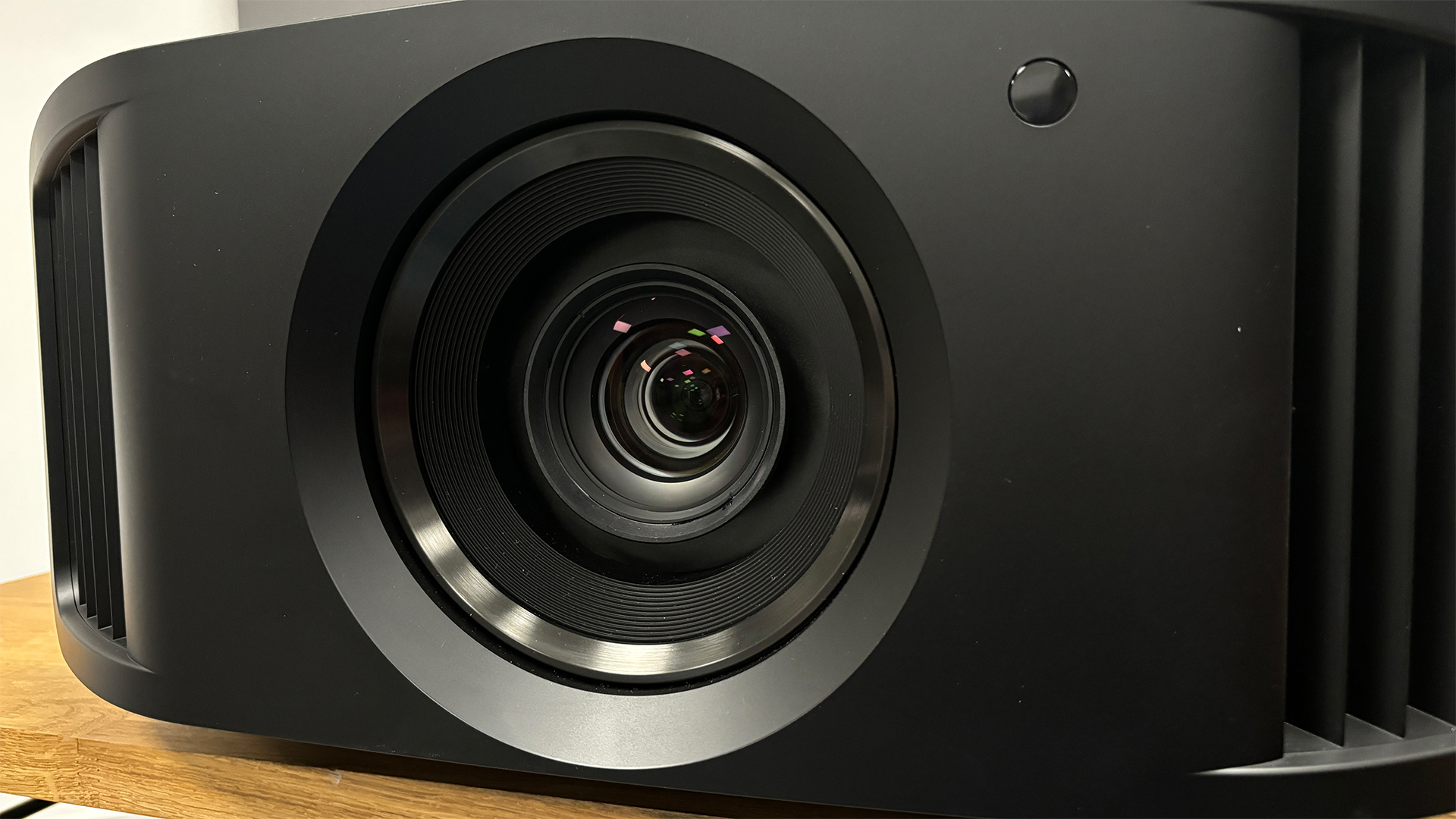
With its latest D-ILA laser projector, JVC has impressed us yet again. This new model embodies much of what we like about the other projectors in this range; it is crisp, detailed, balanced and, most importantly, staunchly cinematic. While it doesn’t go out of its way to dazzle in the same way that the Sony VPL-XW7000ES does, its authenticity ensures that it’s firmly in the discussion of the best projectors currently on the market.
Review published: July 2024. Review updated: November 2024.
SCORES
- Picture 5
- Build 5
- Features 5
MORE:
Here are the best projectors you can buy right now
Check out our review of the JVC DLA-NZ800's closest rival, the Sony VPL-XW7000ES
And here are our reviews of the JVC DLA-NZ7 and Sony VPL-XW5000ES







